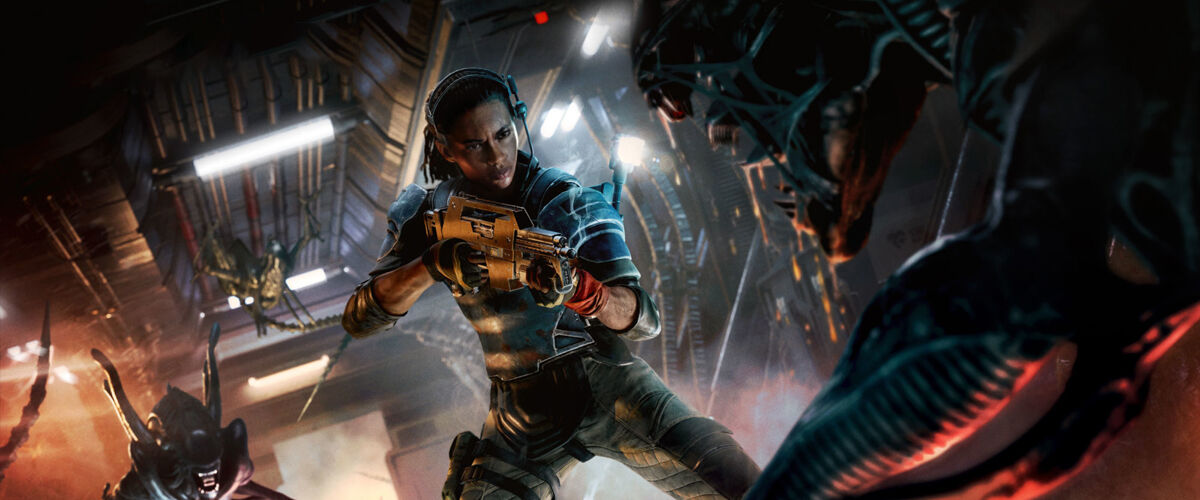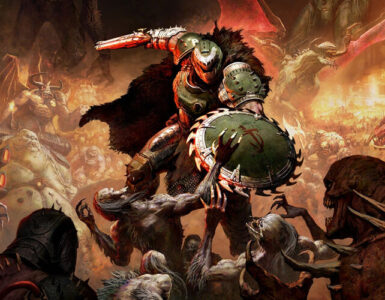Trapped in an abandoned facility on a distant planet, wandering its lonely halls in near-complete darkness all while constantly being stalked by deadly beasts that can strike from any angle – these are the main elements of the Alien film franchise created by Dan O’Bannon, and with nine movies providing a well-established and iconic premise, it’s no surprise that the setting has also spawned numerous video game adaptations, trying to emulate that same horrific atmosphere from the films into a real-time, playable format.
And though there has been a constant wave of Alien-related games over the years, none have managed to capture that feeling of intensity present in the films, barring 2014’s excellent Alien: Isolation, of course. Now, a new contender is aiming to make its mark by offering an Alien game experience like no other, bringing the series to Virtual Reality (VR) with Alien: Rogue Incursion for the PS VR2, Steam PCVR and Meta Quest 3 (February 2025).
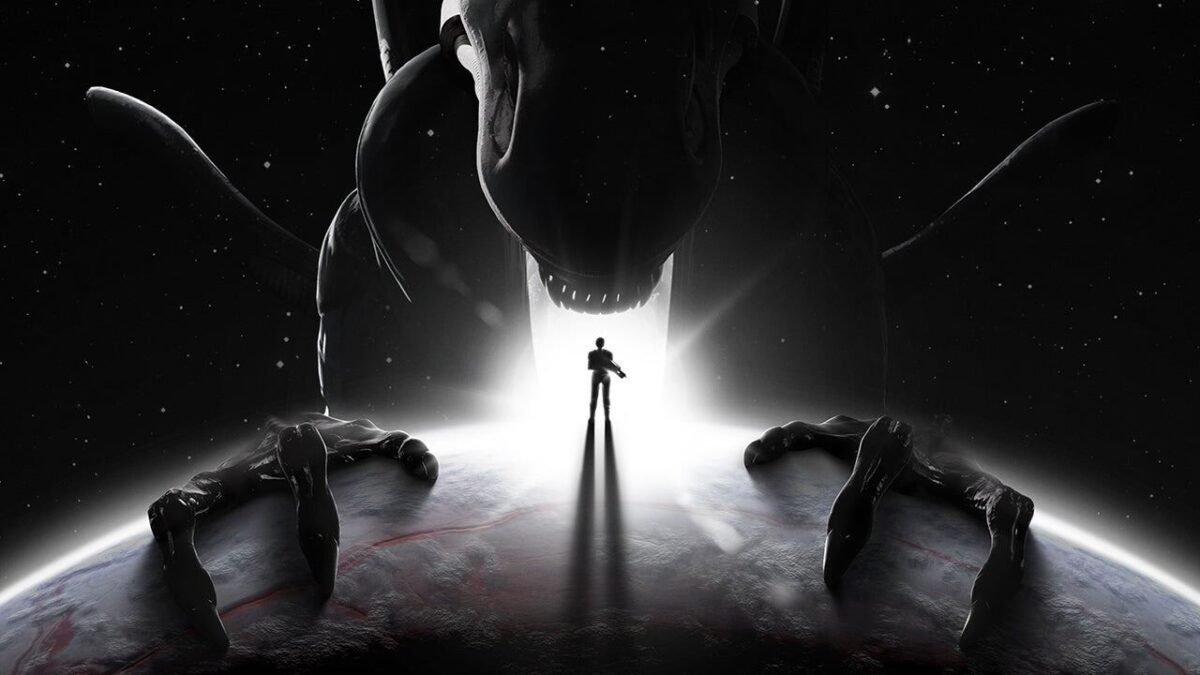
Developed and published by experienced VR studio Survios, makers of 2017’s Raw Data and 2018’s Creed: Rise to Glory, the game aims to simulate the tense experience of being a lone survivor trapped in space, similar to Alien: Isolation, but with one notable difference. This time, players aren’t completely defenceless against the Xenomorph threat, as Alien: Rogue Incursion plays out like an action-horror shooter rather than the survival-horror roots the series is known for, and to that extent, it delivers a fun, albeit flawed, Alien shooter experience.
With a premise very much in the same vein as the films, players step into the shoes of ex-Colonial Marine Zula Hendricks (literally, this time), a soldier who goes AWOL to expose Weyland-Yutani’s nefarious black-site experiments. After receiving a transmission from Gemini Exoplanet Solutions whistleblower and friend Ben Carver, she steals a ship and travels to Castor’s Cradle, a research facility on the uncharted planet Purdan alongside her synth companion Davis 01. In typical Alien fashion, her ship crash lands on entry, and after finding out that the facility has become infested with Xenomorphs, her mission becomes two-fold, to expose the company’s secrets, and survive long enough to do so.
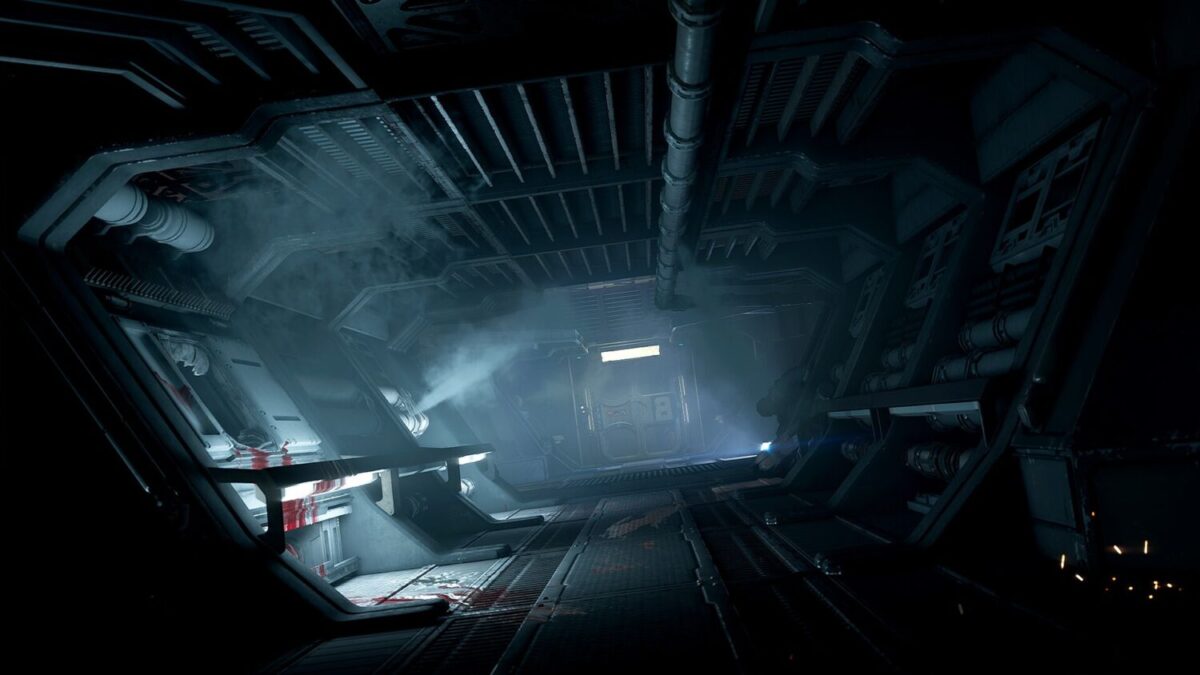
Plot-wise, the game offers little more than an excuse to drop players right into the thick of things, presenting a sprawling space complex to explore and of course, gun down lots of Xenomorphs along the way. Although the title makes an effort to provide light doses of character development, mainly surrounding the camaraderie between Hendricks and Davis 01, along with brief callbacks to Amanda Ripley from Alien: Isolation, the story does feel like it’s taking a backseat to gameplay, which to its credit, certainly makes sense as a VR title.
But let’s get into the meat of the game, and probably the biggest lingering question in the minds of anyone interested in picking up the title, how does Alien: Rogue Incursion handle the transition to virtual reality? At first glance, the game does feel like a classic horror experience, amplified by the fact that every real-world action is mimicked in-game, providing that extra dose of immersion as you explore the creepy unlit hallways of a facility in disarray.
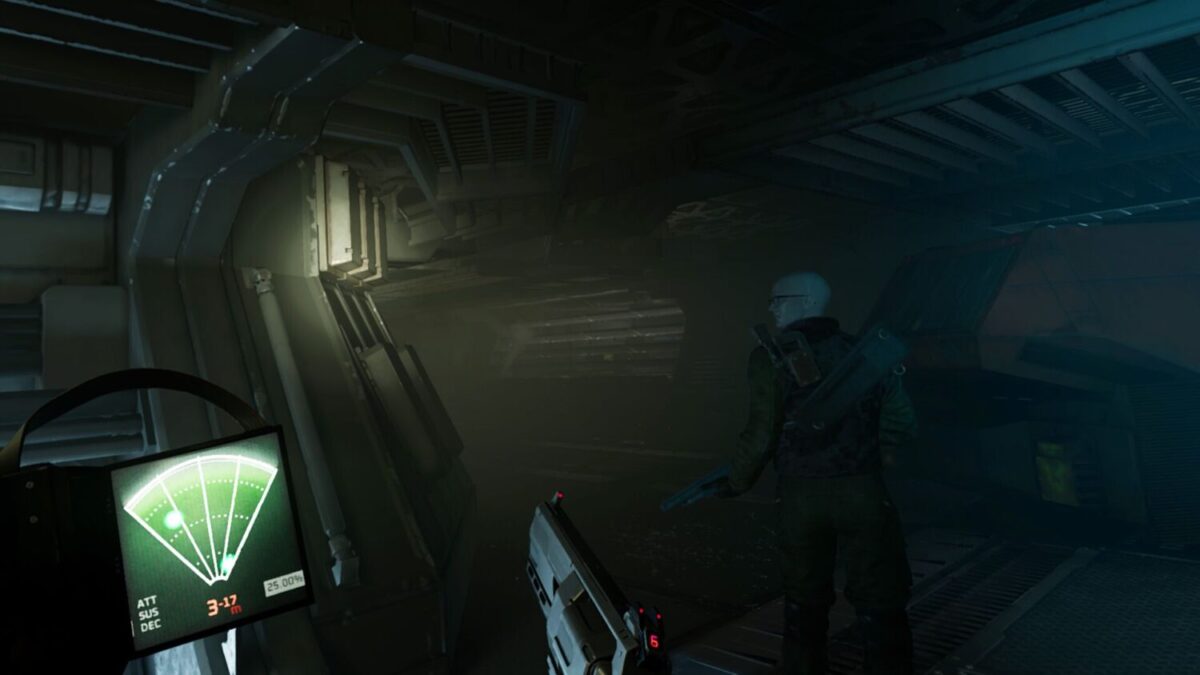
Further adding to this is the fact that, unlike most VR titles, the game animates full character body movements instead of just floating arms, and although this might not seem like much, looking down to see actual moving legs truly adds to the illusion of physically being inside the game world.
Following the general gameplay structure of Alien: Isolation, which was no doubt a major source of inspiration for the title, players will explore the abandoned Castor’s Cradle facility, obtaining keycards with various levels of security clearance to unlock new sections of the map to progress further. In this vein, the game incorporates Metroidvania elements, allowing opportunities for backtracking at every turn, with the allure of obtaining additional resources and snippets of lore.

When it comes to combat, however, the game marks a significant departure from its survival-horror inspirations. Unlike Ripley in Alien: Isolation, Hendricks is rarely defenceless, and armed with her iconic M41A Pulse Rifle and .357 Revolver sidearm, she has enough tools at her disposal to gun down the alien threat, because this time, you’re not the hunted, but the hunter.
Of course, the game does balance things out to ensure players are not too overpowered, as only a limited amount of backup ammunition clips can be carried at once, and much like many other VR shooters, unused rounds remain inside a clip when ejected, encouraging players to actively manage their ammunition supplies by firing in bursts or replacing a partially empty magazine with a fresh one picked up from the environment to ensure they are constantly stocked up with enough rounds to face the Xenomorph threat.

Here, the threat is not only constantly present, but numerous as well. Xenomorphs rarely hunt alone, and when there’s one, others are sure to follow, attacking mostly in pairs but it can also escalate to bigger groups depending on the situation. To make matters worse, the aliens can appear from virtually anywhere, be it ceiling vents or holes in the walls, and at any given moment too, as the game adopts a situational enemy spawning system similar to games like Left 4 Dead. This means that most encounters are not scripted and can occur at any point while the player is travelling between objectives, keeping them constantly on their toes.
Although this notion that danger can lurk at any corner might be effective at building up tension, it’s once the aliens do appear that the game starts to show its cracks, largely in terms of the complete lack of variety regarding enemy behaviour. Yes, the Xenomorphs will hunt in groups and can crawl along walls or on the ceiling, but they don’t actually strike from these advantageous locations. Every enemy follows the same bog-standard attack pattern, no matter where they appear from, they crawl towards the player, then dismount to ground level to attack. It’s such a perplexing design flaw and a missed opportunity to provide more intense and varied encounters.
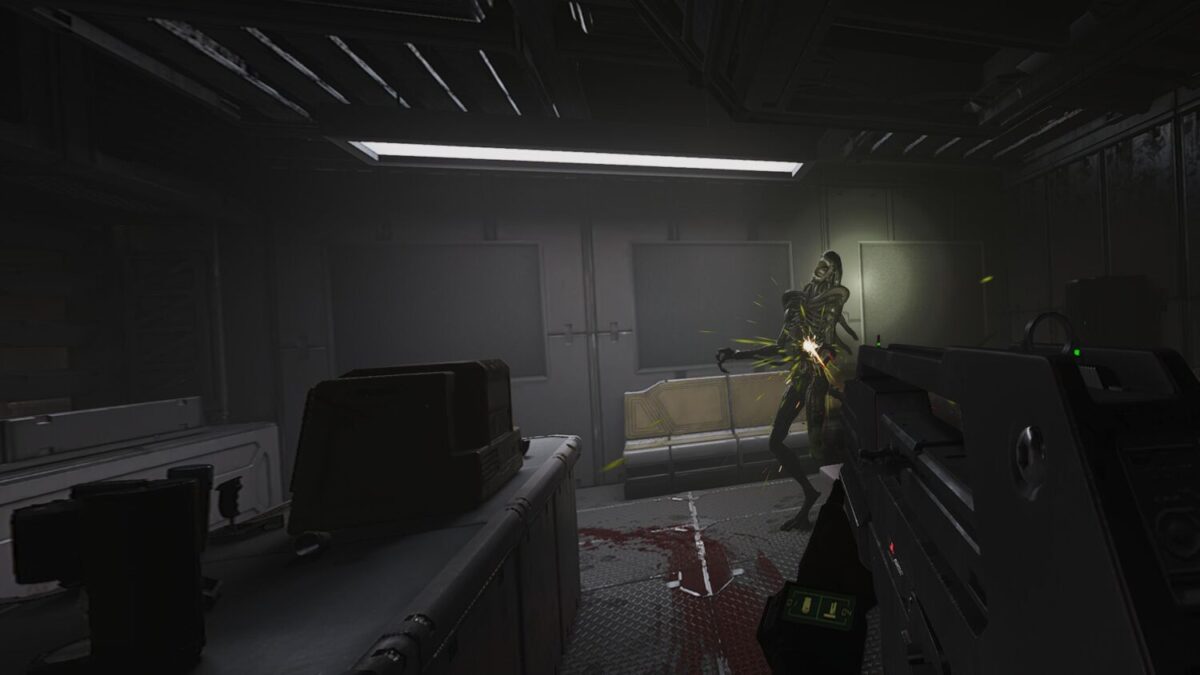
Thankfully, there are certain scripted instances in the game where a player is trapped and swarmed by an overwhelming amount of Xenomorphs, which are undoubtedly the highlights of the game. These encounters usually occur in a wide open area with lots of room to navigate and often provide the optional opportunity to even the odds, allowing the chance to activate specific mechanisms that block off enemy access points, such as closing ceiling vents or shuttering windows, to reduce the amount of openings the aliens can pop out from and flank the player.
The gunplay here is solid as well, with satisfyingly crunchy gunfire sound effects, including the return of the iconic pulse rifle sound effects from the films, with weapons having a decent amount of kickback when fired, requiring players to grip them with both hands to function effectively. The game also implements an aim-down-sight (ADS) snapping system, which automatically locks the gun and aligns its iron sights to a player’s chosen dominant eye when brought close to a certain threshold, a surprisingly welcome feature that makes the game accessible even to those with little experience with VR shooters.
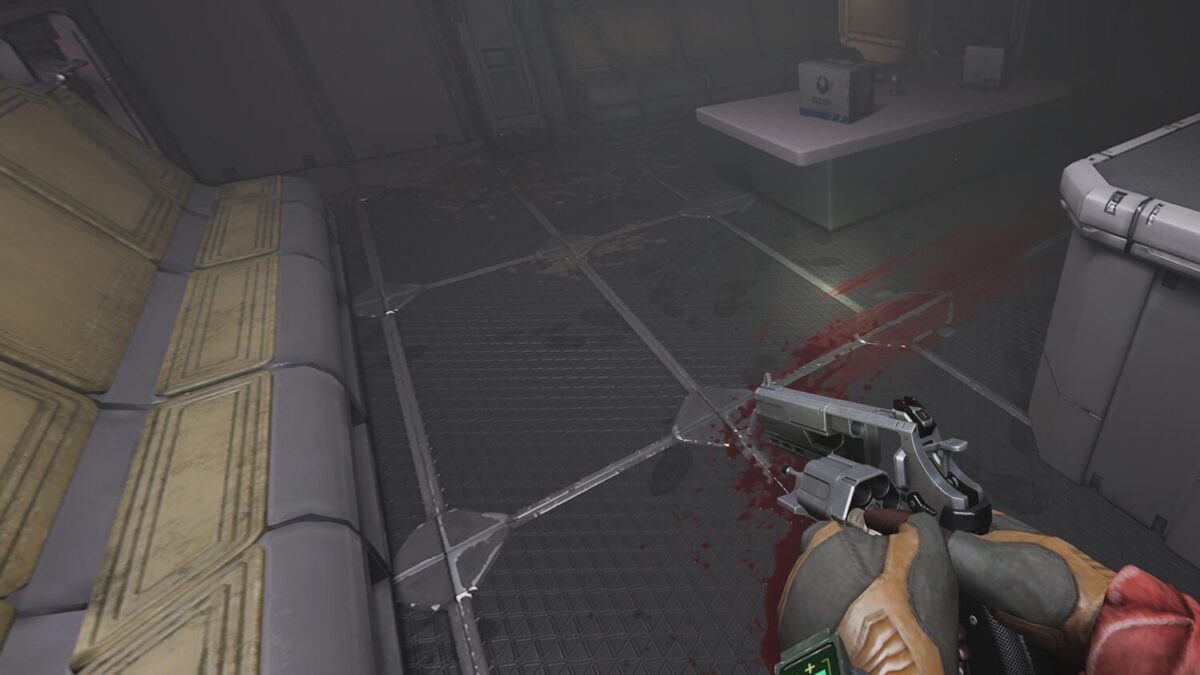
To enhance realism with weapons handling, guns feel intentionally sluggish, especially when it comes to reloading, which is done completely manually. The revolver and shotgun, for example, must be rechambered one bullet or shell at a time, with a deliberate hand movement required to load in every round, while reloading the rifle emulates a slight resistance when inserting a new clip, further slowing down the process. Because of this, loading a weapon in the heat of battle almost guarantees a swift death, as the Xenomorphs hit hard and can kill a player in a few strikes, requiring proper management of the rounds in each weapon before tackling any encounter.
The Xenomorphs might be deadly, especially in packs, but just like how they all follow the same attack pattern, they also look and function identically. For the vast majority of the game, players will be dealing with essentially the same Xenomorph clones. With the title’s short runtime of around five to six hours, more enemy variations might be too much of an ask, but the game would certainly have benefitted from different alien archetypes, such as the long-ranged Spitter or the ambushing Prowler seen in 2021’s Aliens: Fireteam Elite.

As a VR title, performance is a major concern, since ensuring a smooth and stable framerate can prevent players from motion sickness. While Alien: Rogue Incursion manages to maintain a stable framerate on the PSVR2 (running on the base PS5), it achieves this with one major downside, a reliance on reprojection, a system used to double a game’s framerate at the expense of introducing blurriness and object ghosting. Here, its implementation is particularly noticeable, with every movement exhibiting a jarring ghosting effect. As always, how much this system would affect a player boils down to individual tolerance, but it is a point to bring up nonetheless, as personally, even with experience playing other PSVR2 titles with reprojection, I still got uncomfortable playing the game for extended periods.
Fortunately, most of the game occurs in darkness, which can alleviate some of the discomfort brought about by reprojection. While exploring the dimly lit corridors of Castor’s Cradle never fails to induce a creepy feeling of tension, it is the light that eventually reveals the most scary part of all, that being the game’s awful environmental textures. Without any exaggeration, some of the textures here look legitimately straight out of the Xbox 360/PS3 era, and because of how inconsistent each object in every scene can look, ranging anywhere from decent to horrible, this makes the overall graphical fidelity messy and unpolished.
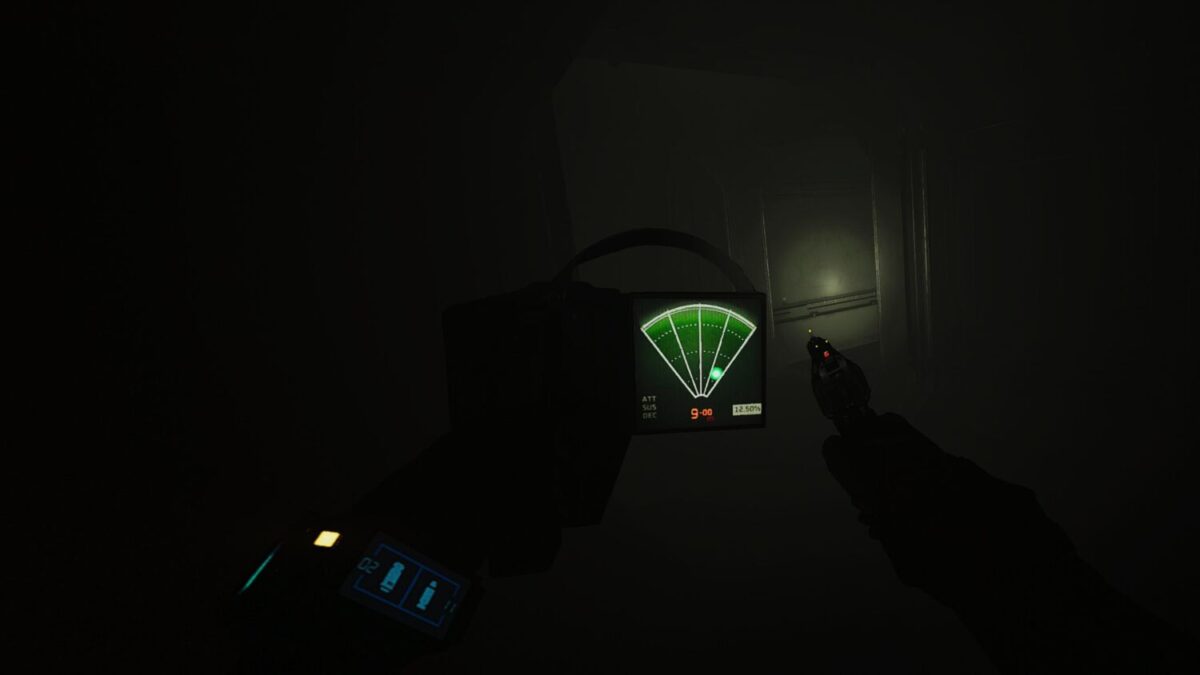
This is certainly a letdown, as some aspects of the title like its excellent lighting, particle effects and specifically the design of the Xenomorphs really does wonders in drawing players into the game’s world, only for them to be yanked out of the immersion with a poorly placed and low-textured environmental object. Visually, the game is a mixed bag, which seems to be a recurring theme for the title.
Alien: Rogue Incursion had a lot going for it, as with a franchise so synonymous with tension and atmosphere as Alien, a VR game adaptation seems like the perfect fit. Survios certainly made a valiant effort, providing the most immersive action-oriented Alien game experience to date, but its ambitious goals are let down by the title’s misfires in terms of gameplay design, performance and graphics, providing an experience that just falls short of greatness.
GEEK REVIEW SCORE
Summary
Despite Alien: Rogue Incursion’s visual drawbacks and questionable gameplay decisions, this virtual reality experience is still the most immersive way to experience the Alien franchise come to life.
Overall
7/10-
Gameplay - 7.5/10
7.5/10
-
Story - 7/10
7/10
-
Presentation - 6.5/10
6.5/10
-
Value - 7/10
7/10
-
Geek Satisfaction - 7/10
7/10

